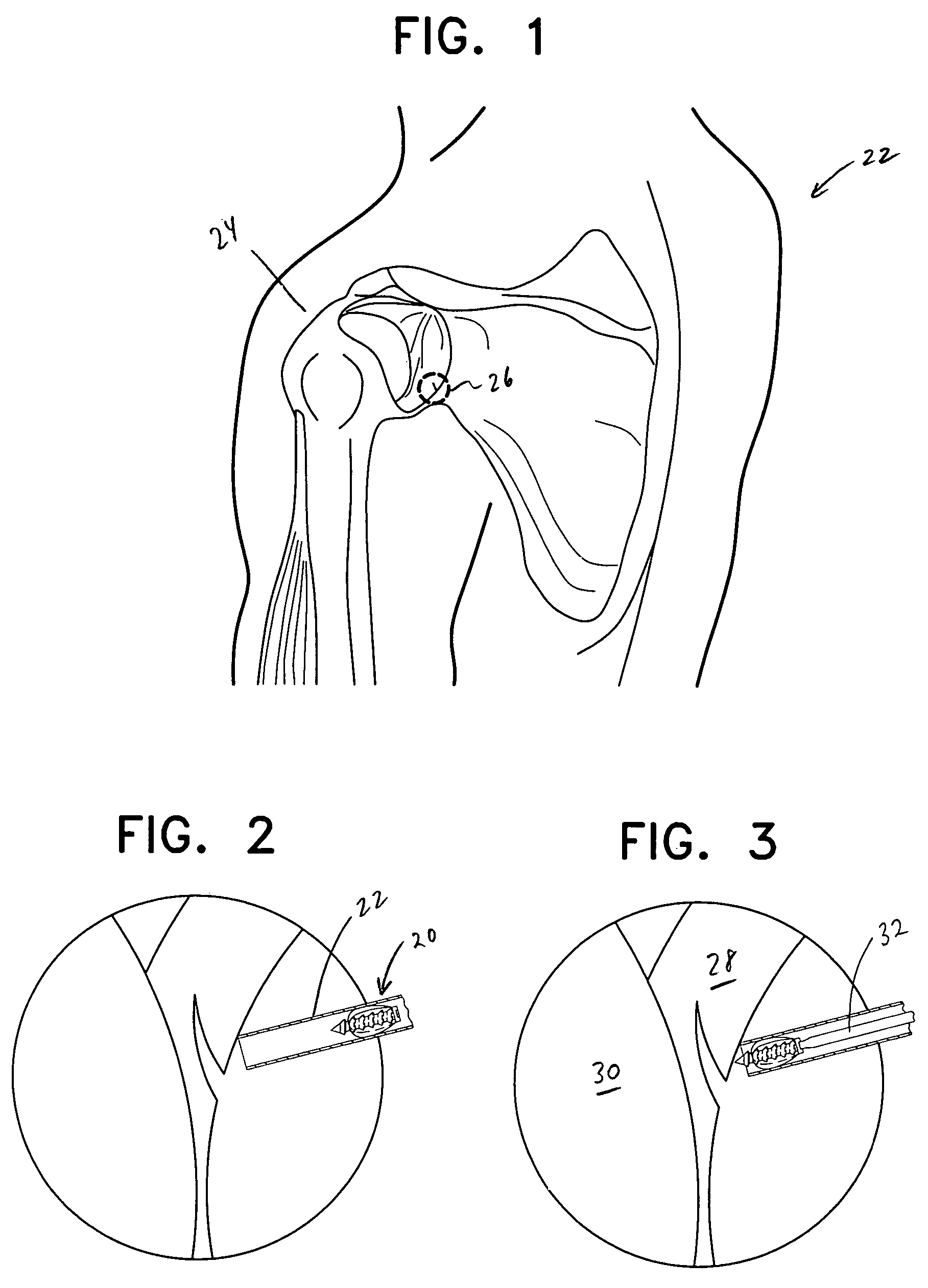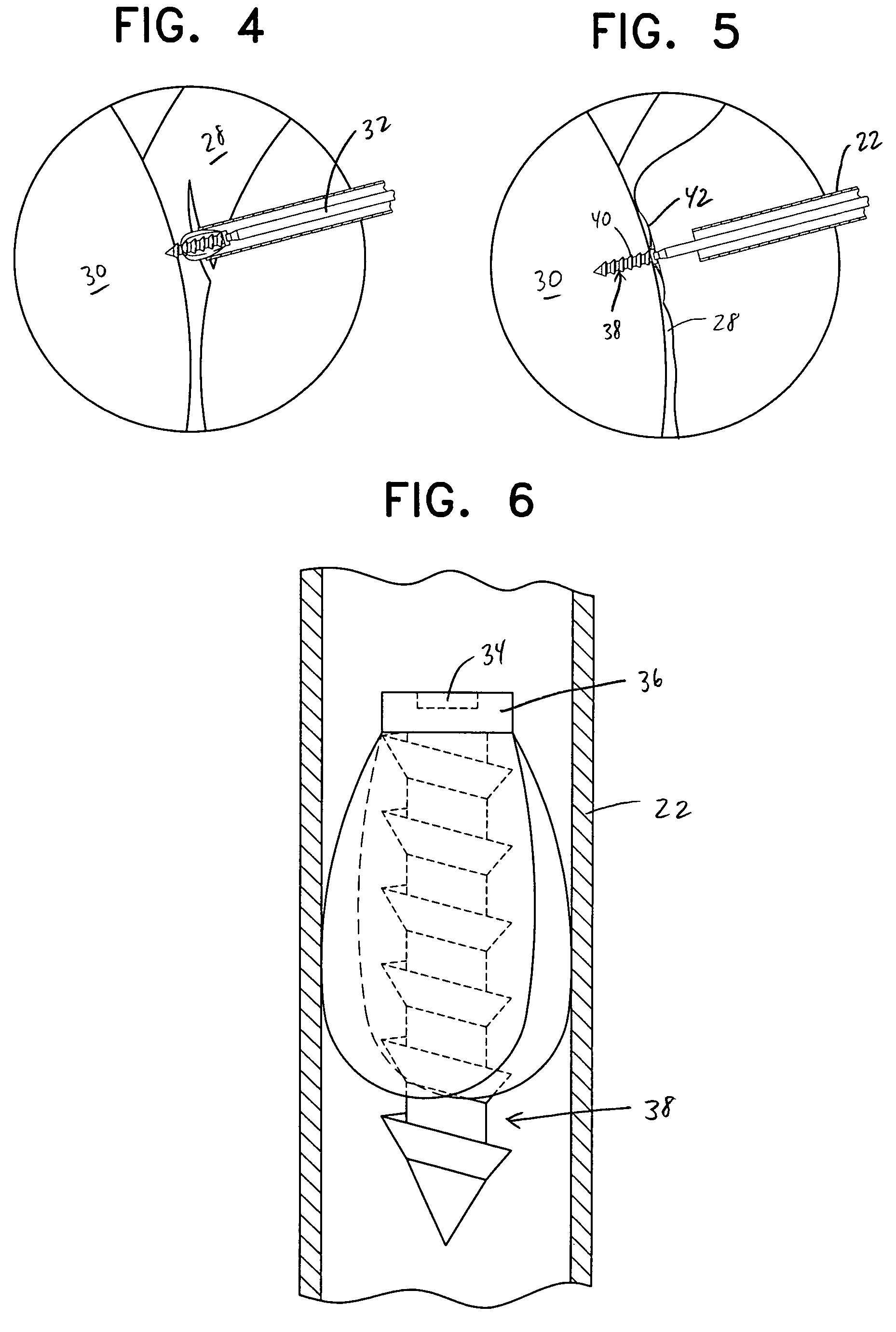Method and apparatus for repair of torn rotator cuff tendons
a rotator cuff and tendons technology, applied in the field of torn rotator cuff tendons repair methods and equipment, can solve the problems of tearing of rotator cuff tendons, various systems usually require unnecessarily large invasive techniques for tendons repair, and the shoulders are subject to great stress and for
- Summary
- Abstract
- Description
- Claims
- Application Information
AI Technical Summary
Benefits of technology
Problems solved by technology
Method used
Image
Examples
Embodiment Construction
[0024]In describing a preferred embodiment of the invention illustrated in the drawings, specific terminology will be resorted to for the sake of clarity. However, the invention is not intended to be limited to the specific terms so selected, and it is to be understood that each specific term includes all technical equivalents which operate in a similar manner to accomplish a similar purpose.
[0025]With reference to the drawings, and to FIGS. 1 through 5, in particular, an orthopedic fastener embodying the teachings of the subject invention is generally designated as 20. With reference to FIG. 1, a person 22 is shown with a skeletal and tendon illustration of the shoulder 24, with particular emphasis directed toward encircled area 26. An enlargement of area 26 is shown in FIGS. 2 through 5 with respect to locating an orthopedic fastener in this region of the shoulder 24 so as to repair torn rotator cuff tendons.
[0026]As shown in FIG. 2, the orthopedic fastener 20 is located in a cann...
PUM
 Login to View More
Login to View More Abstract
Description
Claims
Application Information
 Login to View More
Login to View More - R&D
- Intellectual Property
- Life Sciences
- Materials
- Tech Scout
- Unparalleled Data Quality
- Higher Quality Content
- 60% Fewer Hallucinations
Browse by: Latest US Patents, China's latest patents, Technical Efficacy Thesaurus, Application Domain, Technology Topic, Popular Technical Reports.
© 2025 PatSnap. All rights reserved.Legal|Privacy policy|Modern Slavery Act Transparency Statement|Sitemap|About US| Contact US: help@patsnap.com



